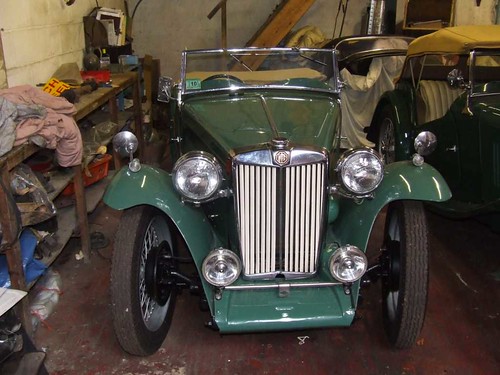Timing has finally allowed me to get my hands wet again... well, dirty at least. The recent changes have put my old car religion on hiatus for months now, but this past Saturday I was able to sneak out.
I have been wanting to paint the '62 Olds. It is a neat car, a sort of "gentleman's sleeper". It has 68,000 original miles, runs perfect and came with the optional 330 horse 394. It also has only one (although ugly) repaint since new.

So at the dangerous risk of sidetracking, I moved the Olds in and started removing trim. I quickly realized that the rear seats, door panels and driver hood hinge had to be removed in order to remove the side trim! So the hood had to come off, too. The only other option listed in the '62 chassis shop manual was to unbolt the fenders and move them out enough to reach the nuts inside that attach to the trim clips. Wouldn't that mean removing the hood anyway?

Above shows the repaint that has bubbled and flaked off over the years. I will have to carefully remove all paint, even where it is not bubbling, because it is not worth the risk to leave it. I just don't know the process that was used, and I want to seal the metal with a good epoxy.

First on the list: address the small rust areas. Here's the lower 1/4 wheel well just behind the driver rear wheel.

And above shows the front of the same wheel well. A little picking with a big screwdriver quickly showed this rotten spot.

So the stripping begins. I start with the flap disc on a 4 1/2" grinder, mainly just at the areas where rust shows as the paint is removed.

I then go to the pneumatic 6" DA sander (I think I used 220 grit) cleaning away paint, primer and tiny debris without thinning and warping the metal. I just need to expose clean bare metal leaving room enough for the patches.

As always, I discover pits and pinholes throughout the length of the bottom. I began to mark the lines where I will cut the eroded sheet metal.

Here's how it looks on the inner fender panel.

And here is the pile of dirt and rust that piles up in that crevice. Anytime water leaks down from the gas filler door, or the trunk lid not perfectly sealing, it draws junk with it and eats away at these inner pockets. And this rust is nothing...! The Olds received relatively low exposure to the elements and salty roads.

Front of wheel well is marked for cutting and pattern.

Bad piece is off and becomes a pattern for making the repair panel.

Here is the pattern. I now get to cut, bend, hammer and weld some sheet metal to become the donor piece. the top will be tricky because it has a slight peak that follows the body trim line and fades to flat towards the bottom. I think I will bend a second crease on a slight angle, and then hammer the panel back to flat as I work down. I will then need to pie cut the flat front in order to "shrink" so that the inner 90 deg. bend can curve from down to going forward, as the pattern shows.

Here it is on jack stands, getting off to a good start. I will get those patches made and show how they work out.
The Model A coupe is not abandoned, I just needed a change of pace!





























